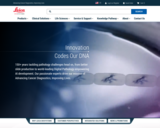
OER
- Subject:
- Applied Science
- Health, Medicine and Nursing
- Material Type:
- Reading
- Author:
- Leica Biosystems
- Date Added:
- 01/27/2022

OER
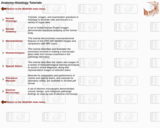
OER Tutorials

This is a video and accomanying worksheet that students can use to learn about antiseptics and disinfectants at home, how they are classified, and then research a product on their own.
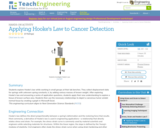
Students explore Hooke's law while working in small groups at their lab benches. They collect displacement data for springs with unknown spring constants, k, by adding various masses of known weight. After exploring Hooke's law and answering a series of application questions, students apply their new understanding to explore a tissue of known surface area. Students then use the necessary relationships to depict a cancerous tumor amidst normal tissue by creating a graph in Microsoft Excel.
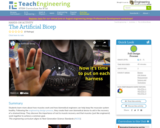
Students learn more about how muscles work and how biomedical engineers can help keep the muscular system healthy. Following the engineering design process, they create their own biomedical device to aid in the recovery of a strained bicep. They discover the importance of rest to muscle recovery and that muscles (just like engineers!) work together to achieve a common goal.
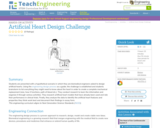
Students are presented with a hypothetical scenario in which they are biomedical engineers asked to design artificial hearts. Using the engineering design process as a guide, the challenge is established and students brainstorm to list everything they might need to know about the heart in order to create a complete mechanical replacement (size, how it functions, path of blood etc.). They conduct research to learn the information and organize it through various activities. They research artificial heart models that have already been used and rate their performance in clinical trials. Finally, they analyze the data to identify the artificial heart features and properties they think work best and document their findings in essay form.
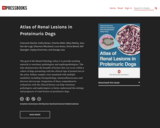
The goal of this Renal Pathology Atlas is to provide teaching material to veterinary pathologists and nephropathologists. The atlas demonstrates the breadth of lesions that can occur within a cohort of dogs presenting with the clinical sign of protein loss in the urine. Kidney samples were examined with multiple modalities including: histopathology, immunofluorescence and electron microscopy. Integration of these comprehensive evaluations with the clinical history can help veterinary pathologists and nephrologists to better understand the etiology and prognosis of renal lesions in proteinuric dogs.
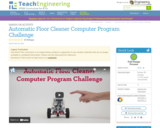
Students learn more about assistive devices, specifically biomedical engineering applied to computer engineering concepts, with an engineering challenge to create an automatic floor cleaner computer program. Following the steps of the design process, they design computer programs and test them by programming a simulated robot vacuum cleaner (a LEGO® robot) to move in designated patterns. Successful programs meet all the design requirements.
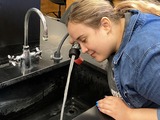
Video of lab safety rules for a BSL-2 Microbiology teaching environment. Power Point quiz for students to test themselves after viewing.
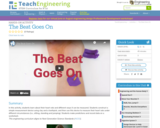
In this activity, students learn about their heart rate and different ways it can be measured. Students construct a simple measurement device using clay and a toothpick, and then use this device to measure their heart rate under different circumstances (i.e., sitting, standing and jumping). Students make predictions and record data on a worksheet.
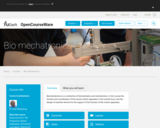
Biomechatronics is a contraction of biomechanics and mechatronics. In this course the function and coordination of the human motion apparatus is the central focus, and the design of assistive devices for the support of the function of the motion apparatus.
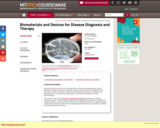
Students will learn about the use of biomaterials to create advanced diagnostic tools for detection of infectious and chronic diseases, restore insulin production to supplement lost pancreatic function in diabetes, provide cells with appropriate physical, mechanical, and biochemical cues to direct tissue regeneration, and enhance the efficacy of cancer immunotherapy.
This course is one of many Advanced Undergraduate Seminars offered by the Biology Department at MIT. These seminars are tailored for students with an interest in using primary research literature to discuss and learn about current biological research in a highly interactive setting. Many instructors of the Advanced Undergraduate Seminars are postdoctoral scientists with a strong interest in teaching.
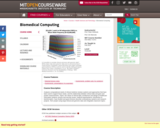
Analyzes computational needs of clinical medicine reviews systems and approaches that have been used to support those needs, and the relationship between clinical data and gene and protein measurements. Topics: the nature of clinical data; architecture and design of healthcare information systems; privacy and security issues; medical expertsystems; introduction to bioinformatics. Case studies and guest lectures describe contemporary systems and research projects. Term project using large clinical and genomic data sets integrates classroom topics.
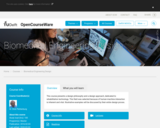
This course presents a design philosophy and a design approach, dedicated to rehabilitation technology. This field was selected because of human-machine interaction is inherent and vital. Illustrative examples will be discussed by their entire design process
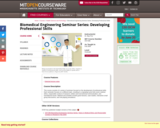
Seminars exploring current research and topical issues in the biomedical sciences, addressed at the general theme of innovation. Seminars are organized in blocks with related content, and are presented by prominent outside speakers as well as by HST faculty members and graduate students. Each seminar block includes several semi-weekly presentations, in addition to wide-ranging discussions among speakers, faculty, and students. Discussions involve issues such as relations between presented research areas, requirements for further advances in the "state of the art", the role of enabling technologies, the responsible practice of biomedical research, and career paths in the biomedical sciences. This course consists of a series of seminars focused on the development of professional skills. Each semester focuses on a different topic, resulting in a repeating cycle that covers medical ethics, responsible conduct of research, written and oral technical communication, and translational issues. Material and activities include guest lectures, case studies, interactive small group discussions, and role-playing simulations.
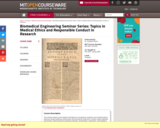
Seminars exploring current research and topical issues in the biomedical sciences, addressed at the general theme of innovation. Seminars are organized in blocks with related content, and are presented by prominent outside speakers as well as by HST faculty members and graduate students. Each seminar block includes several semi-weekly presentations, in addition to wide-ranging discussions among speakers, faculty, and students. Discussions involve issues such as relations between presented research areas, requirements for further advances in the "state of the art", the role of enabling technologies, the responsible practice of biomedical research, and career paths in the biomedical sciences.
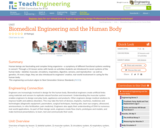
Human beings are fascinating and complex living organisms a symphony of different functional systems working in concert. Through a 10-lesson series with hands-on activities students are introduced to seven systems of the human body skeletal, muscular, circulatory, respiratory, digestive, sensory, and reproductive as well as genetics. At every stage, they are also introduced to engineers' creative, real-world involvement in caring for the human body.
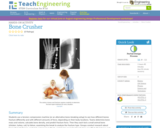
Students use a tension-compression machine (or an alternative bone-breaking setup) to see how different bones fracture differently and with different amounts of force, depending on their body locations. Teams determine bone mass and volume, calculate bone density, and predict fracture force. Then they each test a small animal bone (chicken, turkey, cat) to failure, examining the break to analyze the fracture type. Groups conduct research about biomedical challenges, materials and repair methods, and design repair treatment plans specific to their bones and fracture types, presenting their design recommendations to the class.
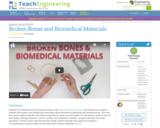
Students are introduced to the concept and steps of the engineering design process and taught how to apply it. Students first receive some background information about biomedical engineering (aka bioengineering). Then they learn about material selection and material properties by using a provided guide. In small groups, students learn of their design challenge (improve a cast for a broken arm), brainstorm solutions, are given materials and create prototypes. To finish, teams communicate their design solutions through class poster presentations.
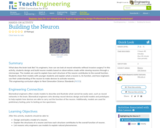
What does the brain look like? As engineers, how can we look at neural networks without invasive surgery? In this activity, students design and build neuron models based on observations made while viewing neurons through a microscope. The models are used to explain how each structure of the neuron contributes to the overall function. Students share their models with younger students and explain what a neuron is, its function, and how engineers use their understanding of the neuron to make devices to activate neurons.